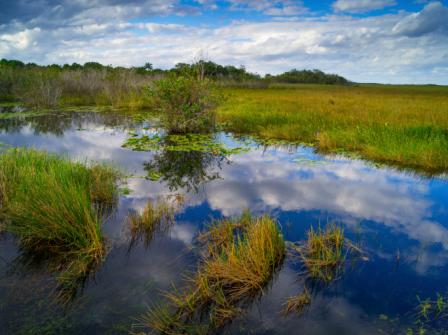Project Summary

Salt marshes are vitally important to Southwest Florida. They serve as storm surge buffers, shoreline stabilizers and breeding grounds for wildlife. The 2014 National Climate Assessment projects that salt marshes are at risk both in Florida and around the country from anticipated climate impacts including relative sea level rise, coastal erosion and more intense storms. The Charlotte Harbor National Estuary Program and Southwest Florida Regional Planning Commission, supported by an assistance grant from the U.S. Environmental Protection Agency, collaborated to assess the historic and current range of salt marshes in this region and identify their vulnerability to changing climate conditions.
The Climate Change Vulnerability Assessment and Adaptation Opportunities for Salt Marsh Types in Southwest Florida study determined that the current pace of sea level rise appears to allow some locations for marsh migration on mainland shores. However, “in other locations salt marshes are drowning where there is no location to move to.” The study further mapped these areas to better determine the barriers to movement and understand where salt marshes are able to, and in the future expected to, move as they adapt to higher sea levels. By providing information on expected migration and isolation areas, the report helps local governments identify priority conservation areas to preserve salt marshes and their associated benefits under current and future conditions. The study included recommendations that governments, stakeholder groups or the public should take as part of their adaptation strategies (e.g., protecting or armoring of shorelines).


